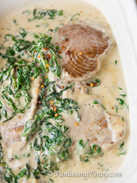- News Front Page
- Uncategorized
- Headline News
- Filipino Calgarian
- Business
- Pinoy Stories
- Community News
- Publisher's Note
- The Main Ingredient
- Views and Opinions
- Maikling Kwento
- Alberta News
- OFW – Month
- Travel News
- Health and Lifestyle
- Pinoy Toons
- Pinoy Spirit
- Entertainment
- The Philippine Lawyer
- Horoscope
- Greetings
- About Us
- Greetings From the Prime Minister
- Greetings from the President of the Philippines
- Greetings from the Premier of Alberta
- Greetings from the Mayor of Calgary
- Advertise With Us
- Disclaimer
- Subscription
Publisher's Note
- Publisher’s Note
 by CK
May is the month of flowers not just in the Philippines but also here in Calgary. A lot of my neighbors have done their spring cleaning and unfortunately I cannot cope up with them. I remember that during this time of the year my husband, Hank gets busier day by day. He takes care [...]
by CK
May is the month of flowers not just in the Philippines but also here in Calgary. A lot of my neighbors have done their spring cleaning and unfortunately I cannot cope up with them. I remember that during this time of the year my husband, Hank gets busier day by day. He takes care [...]
Visitors to Pinoytimes
Page added on April 21, 2016
Kuya Bong’s Kusina
Omega-3 in fish: How eating fish helps your heart
source: http://www.mayoclinic.org
If you’re worried about heart disease, eating one to two servings of fish a week could reduce your risk of dying of a heart attack.
What are omega-3 fatty acids, and why are they good for your heart?
Fish contain unsaturated fatty acids, which, when substituted for saturated fatty acids such as those in meat, may lower your cholesterol. But the main beneficial nutrient appears to be omega-3 fatty acids in fatty fish. Omega-3 fatty acids are a type of unsaturated fatty acid that may reduce inflammation throughout the body. Inflammation in the body can damage your blood vessels and lead to heart disease.
Omega-3 fatty acids may decrease triglycerides, lower blood pressure, reduce blood clotting, decrease stroke and heart failure risk, reduce irregular heartbeats, and in children may improve learning ability. Eating at least one to two servings a week of fish, particularly fish that’s rich in omega-3 fatty acids, appears to reduce the risk of heart disease, particularly sudden cardiac death.
Does it matter what kind of fish you eat?
Fatty fish, such as salmon, lake trout, herring, sardines and tuna, contain the most omega-3 fatty acids and therefore the most benefit, but many types of seafood contain small amounts of omega-3 fatty acids.
Are there any kinds of fish you should avoid?
Some fish, such as tilapia and catfish, don’t appear to be as heart healthy because they contain higher levels of unhealthy fatty acids. Keep in mind that any fish can be unhealthy depending on how it’s prepared. For example, broiling or baking fish is a healthier option than is deep-frying.
Some researchers are concerned about eating fish produced on farms as opposed to wild-caught fish. Researchers think antibiotics, pesticides and other chemicals used in raising farmed fish may cause harmful effects to people who eat the fish.
How much fish should you eat?
For adults, at least two servings of omega-3-rich fish a week are recommended. A serving size is 3.5 ounces (99 grams), or about the size of a deck of cards. Women who are pregnant or plan to become pregnant and young children should limit the amount of fish they eat because they’re most susceptible to the potential effects of toxins in fish.
Can you get the same heart-health benefits by eating other foods that contain omega-3 fatty acids, or by taking omega-3 fatty acid supplements?
Eating fish rich in omega-3 fatty acids and other nutrients appears to provide more heart-healthy benefits than does using supplements. Other nonfish food options that do contain some omega-3 fatty acids include flaxseed, flaxseed oil, walnuts, canola oil, soybeans and soybean oil. However, similar to supplements, the evidence of heart-healthy benefits from eating these foods isn’t as strong as it is from eating fish.
Ginataang Yellow Fin Tuna
Ginataang Yellow Fin Tuna is another version of fish cooked in coconut cream. I used yellow fin tuna fillet for this recipe. I got this fish frozen in a package composed of three large fillets. The thing that I was not expecting is the place where I got this. Nearby supermarkets and Asian stores do not have any yellow fin available during that day.
Ingredients
3 fillets yellow fin tuna, pan fried for 1 minute per side
1 cup ampalaya leaves
2½ cups coconut cream
2 thumbs ginger, julienne
1 medium red onion, diced
5 cloves garlic, crushed and chopped
4 tablespoons cooking oil
2 tablespoons fish sauce
⅛ teaspoon ground black pepper
½ teaspoon chili flakes
Instructions
Heat oil in a pan.
Saute garlic and onion.
Add ginger and continue to cook until the onion gets soft.
Pour-in coconut cream. Stir and let boil.
Add the ground black pepper and fish sauce. Stir and cook for 1 minute.
Put the fried yellow fin tuna fillet in the pan. Scoop some coconut cream on top while cooking. Cover and cook in low to medium heat for 12 minutes.
Add the ampalaya leaves. Stir cover and cook for 3 minutes.
Add red pepper flakes or fresh siling labuyo.
Transfer to a serving plate. Serve.
Share and enjoy!
Lemon Garlic Butter Salmon with Spring Salad
Ingredients
4 pieces salmon fillet
¾ cup salted butter
4 sprigs thyme
2 teaspoons garlic powder
1 teaspoon salt
⅛ teaspoons ground black pepper
2 tablespoons canola oil
1 fresh lemon
Instructions
Combine salt, ground black pepper, and garlic powder in a small bowl mix well.
Arrange the salmon fillet in a plate. Rub the garlic powder mixture all over the salmon. Let it stay for 10 to 15 minutes.
Melt the butter in a pan. Add the oil. Set the heat between low and medium.
Gently add the salmon fillet and thyme in the pan. Do not use high heat when cooking with butter because it has a tendency to get burnt quickly. Cook each side of the salmon fillet for 7 to 10 minutes (in low to medium heat) or until the fish starts to brown.
Remove from the frying pan. Arrange in individual plates. Squeeze lemon juice on top.
Serve with white or brown rice and salad.
Share and enjoy!
Kale and Tuna Laing
Kale and Tuna Laing is a version of the famous laing (taro leaves cooked in coconut milk). This recipe is unique because I used kale leaves as an alternative for taro leaves. This is best for people who are abroad and don’t have quick access to dried taro leaves (“dahon ng gabi”).You will not be able to buy dried kale leaves, you will need to dry it yourself. What I did was to chop the kale and arranged it in a wide baking tray. It took me a couple of days to dry it outside. It will be best if you do not put the kale out on direct sunlight because it will make the leaves crisp. I placed the tray under a translucent table so that it won’t get direct sunlight. You can also use a food dehydrator. Using tuna in can with water is convenient. This is a good alternative to pork and it makes the dish tastes better too. I poured everything from the can, including the water.
Ingredients
2 cups (1 can) coconut milk
2 cups (1 can) coconut cream
12 ounces canned tuna (in water)
5 to 8 pieces dried red chili pepper
3 cups dried chopped kale leaves
¼ cup sliced ginger
1 teaspoon minced garlic
¼ cup spicy shrimp paste (bagoong)
Instructions
Combine the coconut milk, tuna (including the water), chili pepper, garlic, and ginger in a cooking pot.
Heat-up the stove top and let the mixture boil. Cover and cook in medium heat for 10 minutes.
Add the dried kale leaves. Do not stir. Cover and cook for 15 minutes in low to medium heat.
Remove the cover and stir. Make sure that the kale absorbs the coconut milk. Cover again and continue to cook for another 15 minutes. You will need to add more coconut milk if it is starts to evaporate during the process.
Add the coconut cream and shrimp paste. Stir. Cover and continue to cook in low to medium heat for 45 to 60 minutes. You can add more coconut milk or water during the process if needed.
Transfer to a serving bowl. Serve with rice.
Share and enjoy!
RELATED STORIES
LATEST HEADLINES
- Alberta implements provisional ban on temporary foreign workers
- April 2017 photo enforcement locations
- New support for Alberta’s women entrepreneurs
- Miss Universe France Iris Mittenaere Crowned MISS UNIVERSE 2016
- Growth of good jobs for Canadians the goal of the Global Skills Strategy
COMMUNITY NEWS
 WHAT IS THERE TO LOSE?
WHAT IS THERE TO LOSE? Changes to Regulations Will See Age Increased for Dependent Child
Changes to Regulations Will See Age Increased for Dependent Child ABS-CBN Files $5M Lawsuit Against Casinillo and Gonzalez For Selling Pirated Set-Top Boxes in Edmonton, Canada
ABS-CBN Files $5M Lawsuit Against Casinillo and Gonzalez For Selling Pirated Set-Top Boxes in Edmonton, Canada Forever in our Hearts
Forever in our HeartsPINOY STORIES
 More Pinoys enjoys Kapamilya Shows via ABS-CBN TV Plus
More Pinoys enjoys Kapamilya Shows via ABS-CBN TV Plus- Holy Week practices in the Philippines
PINOY SPIRIT
HAVE YOUR SAY
Lorem ipsum dolor sit amet, consectetur adipiscing elit, dolor sit ipsum.PROMOTIONAL BLOCK
Lorem ipsum dolor sit amet, consectetur adipiscing elit, dolor sit ipsum.TRAVEL NEWS
PINOY TOONS
Tags
Archives


















